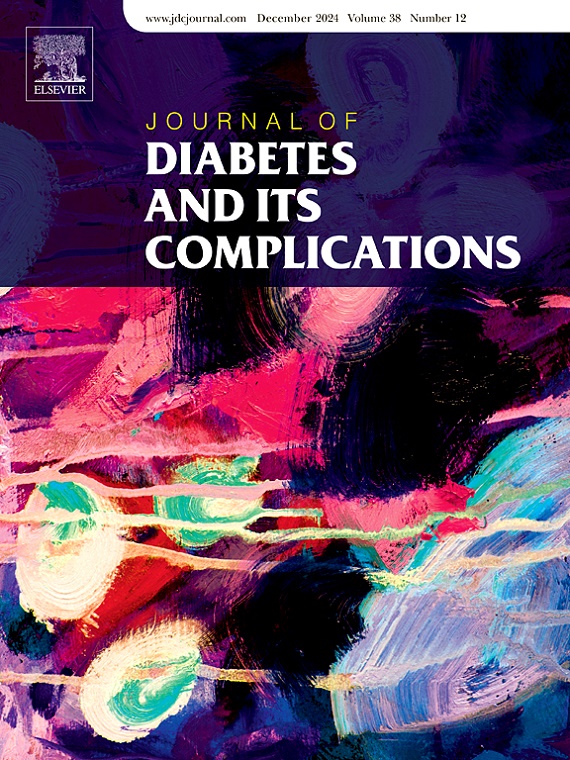Low imaging-detected muscle mass as a prognostic factor for overall and amputation-free survival in patients undergoing lower extremity amputation
IF 3.1
3区 医学
Q3 ENDOCRINOLOGY & METABOLISM
引用次数: 0
Abstract
Background
Amputations and sarcopenia are both increasing globally. This study investigates the association between imaging-detected muscle mass and outcomes after lower extremity amputation.
Methods
The sample population included patients undergoing amputation with abdominal computed tomography (CT) scans. The psoas muscle index (PMI) and skeletal muscle index (SMI) were evaluated at the level of the 3rd lumbar vertebra. Overall survival (OS) and amputation-free survival (AFS) were evaluated.
Results
A total of 72 patients (mean age: 66.4 ± 18.5 years) were evaluated in the study. Lower PMI and SMI were associated with decreased OS (PMI/SMI: HR 4.120, 95 % confidence interval [CI]: 1.692–10.032/HR 2.487, 95 % CI: 1.091–5.666) and AFS after the first amputation (PMI/SMI: HR 3.561, 95 % CI: 0.938–13.516/HR 3.982, 95 % CI: 1.080–14.677) in univariate models. Low PMI and SMI remained significant in multivariable models adjusted for age, sex, and amputation level.
Conclusions
Imaging-detected low muscle mass is associated with impaired OS and AFS in patients undergoing lower extremity amputation. Evaluation of muscle mass from available CT scans may provide useful information for clinical decision-making.
低成像检测到的肌肉质量作为下肢截肢患者总体生存和无截肢生存的预后因素
在全球范围内,运动量和肌肉减少症都在增加。本研究探讨了成像检测肌肉质量与下肢截肢后预后之间的关系。方法采用腹部计算机断层扫描(CT)对截肢患者进行扫描。在第3腰椎水平测定腰肌指数(PMI)和骨骼肌指数(SMI)。评估总生存期(OS)和无截肢生存期(AFS)。结果共纳入72例患者,平均年龄66.4±18.5岁。在单变量模型中,较低的PMI和SMI与首次截肢后OS (PMI/SMI: HR 4.120, 95%可信区间[CI]: 1.692-10.032 /HR 2.487, 95% CI: 1.091-5.666)和AFS (PMI/SMI: HR 3.561, 95% CI: 0.938-13.516 /HR 3.982, 95% CI: 1.080-14.677)的降低相关。低PMI和SMI在调整了年龄、性别和截肢水平的多变量模型中仍然显著。结论影像学检测到的低肌肉质量与下肢截肢患者的OS和AFS受损有关。从现有的CT扫描中评估肌肉质量可以为临床决策提供有用的信息。
本文章由计算机程序翻译,如有差异,请以英文原文为准。
求助全文
约1分钟内获得全文
求助全文
来源期刊

Journal of diabetes and its complications
医学-内分泌学与代谢
CiteScore
5.90
自引率
3.30%
发文量
153
审稿时长
16 days
期刊介绍:
Journal of Diabetes and Its Complications (JDC) is a journal for health care practitioners and researchers, that publishes original research about the pathogenesis, diagnosis and management of diabetes mellitus and its complications. JDC also publishes articles on physiological and molecular aspects of glucose homeostasis.
The primary purpose of JDC is to act as a source of information usable by diabetes practitioners and researchers to increase their knowledge about mechanisms of diabetes and complications development, and promote better management of people with diabetes who are at risk for those complications.
Manuscripts submitted to JDC can report any aspect of basic, translational or clinical research as well as epidemiology. Topics can range broadly from early prediabetes to late-stage complicated diabetes. Topics relevant to basic/translational reports include pancreatic islet dysfunction and insulin resistance, altered adipose tissue function in diabetes, altered neuronal control of glucose homeostasis and mechanisms of drug action. Topics relevant to diabetic complications include diabetic retinopathy, neuropathy and nephropathy; peripheral vascular disease and coronary heart disease; gastrointestinal disorders, renal failure and impotence; and hypertension and hyperlipidemia.
 求助内容:
求助内容: 应助结果提醒方式:
应助结果提醒方式:


